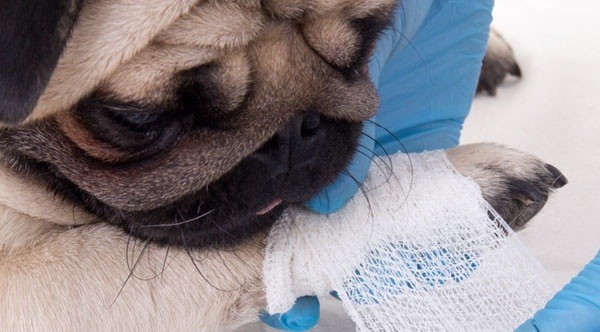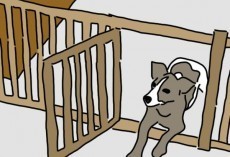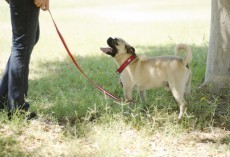With so many first-aid items that sites recommend, it's hard to know which ones are most important. Luckily there's a list to help guide you through which ones you need the most for your pooch and how they'll be useful to you.
There are plenty of pre-stocked first-aid supply kits available in stores, some of which have over 20 items, and others with upward of 50. A homemade first-aid kit for your dog can be just as useful.
Basic items for general use:
1. Scissors: You may need to remove excess fur to clean a wound, and certainly to trim a roll of gauze after dressing a wound.2. Tweezers: For splinters, bee or wasp stings, or to remove a freshly attached tick, tweezers can also serve a variety of purposes in a tough situation.
3. Turkey baster or eyedropper: You should certainly have an instrument for precisely administering liquid relief to your dog.
4. Rectal thermometer and petroleum jelly: A rectal thermometer designed for use in dogs, along with a lubricant for proper application.
5. Flashlight or penlight:
Having a source of light can be critical to determining the nature of the problem.For treating wounds:
6. Latex gloves: The last thing you need is to get your hands covered in bodily fluids while you’re trying to provide emergency triage.7. Hydrogen peroxide: Some sites list hydrogen peroxide for dog first-aid kits as a way to induce vomiting under a vet’s explicit direction.
8. Antibiotic ointment / antibacterial wipes: Single-use antiseptic or antibacterial wipes will serve the same purpose.
For dressing wounds:
9. Cotton balls
10. Gauze.
11. Medical adhesive tapeFor transport:
12. Muzzle: Wounded or otherwise inconvenienced dogs may lash out, even against their beloved owners.
13. Leash: A spare leash can help you lead your dog to a place of safety so she can receive first aid.
14. Towels: As above, a major wound may be too severe for cotton balls to adequately address.
15. Blanket: A blanket can provide swaddling for a frightened dog.Optional, but useful:
16. Pet carrier: A pet crate appropriate to her size may help you get to the veterinarian more easily and avoid her panicking en route.What is in your dog’s DIY first-aid kit?
Many sources I consulted note that you should keep a pet first-aid book handy as well.Emergencies can happen anywhere and at any time.
Do you know where the closest 24-hour animal hospitals are in your area?
As Dogster recommends, make sure you have the names and numbers of emergency veterinarians in your area in the event of an emergency. That way if something happens to your pooch you'll have the essentials and will also know where the emergency centers are located. Always be prepared for whatever circumstances may arise — your pup's life depends on it!










